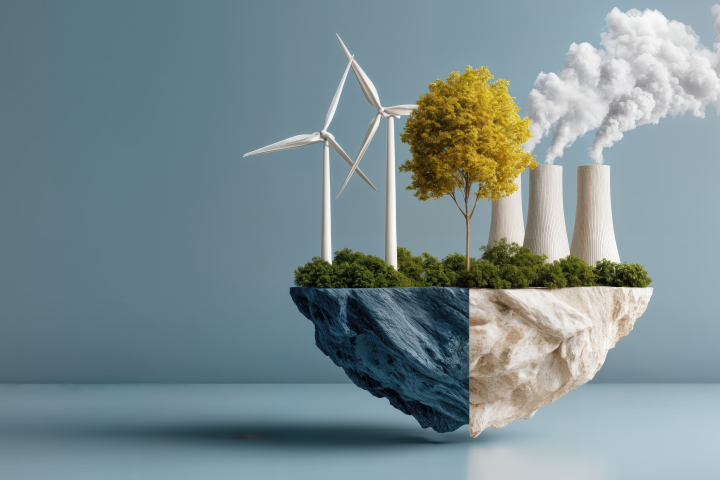Beyond Combustion: Turning Fossil Fuel Infrastructure into Climate Solutions through a “Dual Approach”?

During the 2024 State of the Nation Address, President Cyril Ramaphosa described climate change as “an existential challenge that confronts us all and South Africa is committed to reducing global emissions.” It is for this reason that the Cabinet approved the implementation framework for the Just Energy Transition Plan (JET Plan 2023-2027). This step signifies the need for a comprehensive regulatory framework to achieve the goals set in the Paris Agreement, especially considering that we are halfway through the 2023-2027 timeframe. Moreover, this implementation has raised the question of whether fossil fuel infrastructure should be repurposed for use as bridges to Climate Change mitigation. This narrative sparks a fresh perspective into the Green Energy Transition discourse, which is the feasibility of repurposing elements of the existing fossil fuel infrastructure through the “Dual Approach”[1] to facilitate the transition to renewable energy.
“Dual Approach” in the Energy sector
Energy security is the backbone of the South African economy, responsible for economic growth and transformation. The country depends on 82 percent of coal as the primary source for its energy supply.[2] However, the exploration and production processes involved in this energy source are both disturbing and destructive to the environment.[3] For instance, South Africa is the world’s 14th largest contributor of greenhouse gas emissions (GHGs).[4] This alarming emission rate has led the country to invest more in sustainable energy use.
Understanding that the transition to low-carbon emissions is pragmatic, the country is actively pursuing short-term solutions. These include the repurposing of fossil fuel infrastructure for green energy technologies, which is referred to as a “Dual Approach.” This strategy acknowledges the need for both immediate energy needs and long-term sustainability goals. The strategy encourages the government to take advantage of and improvise the existing fossil fuel infrastructure to speed the just energy transition. For instance, Eskom’s Just Energy Transition (JET) Office has committed to repurposing power stations and decommissioning coal-fired power plants to support the development of renewable energy. Eskom aims to decommission 10 power stations by 2040 and 2050.[5] According to Eskom’s socio-economic impact study, people, the economy and environment will be affected by the repurposing of these identified power stations. Therefore, it is imperative to understand the implications of this approach on the laws and policies, as well as the feasibility of implementation.
Feasibility and Legal implications of the “Dual Approach”
The feasibility of South Africa’s “Dual Approach” depends on overcoming techno-economic, socio-political, and socio-technical constraints on implementation.[6] These constraints include the country’s overdependence on coal, lack of energy infrastructure, existing institutional capacity issues and associated employment risks. In light of these constraints, sensitive intervention points for addressing these factors were proposed based on results from interview data and supporting discussions in the academic and grey literature from a study by Energy Research and Social Science.
South Africa’s legislative landscape and policy framework will affect successful intervention on these factors. Currently, the energy sector in South Africa is regulated by the National Energy Act 34 of 2008, which ensures that “energy sources are available in sustainable quantities and affordable prices in the country.” The Electricity Regulation Act 4 of 2006 is responsible for establishing a “national regulatory framework for electricity supply of the country.” The investment towards renewable energy led to the development of the Renewable Energy Policy and the amendment of the Electricity Regulations Act. The 2011 Amendment Bill aims to “promote the use of diverse sources of energy, renewable energy sources and energy efficiency”.
However, these laws focus on electricity generation and supply, but do not adequately address core constraints met with the regulation of the repurposing of fossil fuels infrastructure. Eskom’s JET Plan addresses some of these key issues, but the law still fails to have substantive provisions in support of this plan. The law should address the nuances of repurposing fossil fuel infrastructure, such as using them in industrial processes, transportation, or other energy applications that are beyond the scope of electricity generation. There is no clear regulatory guideline for the decommissioning and repurposing of fossil fuel facilities in the Acts. The current laws and policies rather focus on fossil fuel exploration or production, or on renewable energy within the context of laws which were principally designated for the regulation of conventional fossil fuel energy.
A comprehensive regulatory framework is necessary for the success of the “Dual Approach.”
As South Africa and the world navigate energy transition, the question of whether fossil fuel infrastructure can be used as climate change solutions remains. The challenges are significant, but so are the opportunities. The feasibility constraints and legal gaps highlight the need for the government, mining companies, industries, and academic researchers to establish a comprehensive regulatory framework that addresses legal, political, economic, technical, and social dimensions to ensure a truly just and efficient energy transition.
[1] Also referred to as a Dual Strategy in Z Ftiti, H Awijen, HB Ameur, et al. ‘Understanding the drivers of energy capacity transitions: New evidence from a dual approach’ (2025) 141 Energy Economics.
[2] The South African Energy Sector Report 2023.
[3] J Gasparotto & K Da Boit Martinello ‘Coal as an energy source and its impacts on human health; (2021) 2 Energy Geoscience.
[4] ‘The Draft Sectoral Emission Targets Report for public comment’ (published in DFFE 50571 of 26 April 2024).
[5] Eskom’s Just Energy Transition (JET) Fact sheet #001 available at https://www.eskom.co.za/wp-content/uploads/2021/10/JET_Factsheet13Oct2021.pdf.
[6] P Mirzania, JA Gordon, N Balta-Ozkan et al. ‘Barriers to powering past coal: Implications for a just energy transition in South Africa’ (2023) 101 Energy Research & Social Science.
